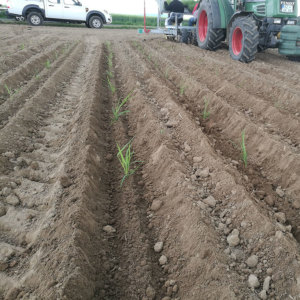That is why Miscanthus can be grown almost anywhere
Depending on the basic considerations of the objective of cultivation, a site selection and a selection for the variety of Miscanthus can be made. Where appropriate, a combination with other crops is also useful if this increases the value added or the ESS. In Central Europe, the cultivation of the variety Miscanthus x Giganteus (of various origins) by rhizomes (root sections) is very common. On the basis of our own cultivation tests (see field report), which have also been confirmed again by scientific evaluations in 2019, we have been focusing exclusively on field cultivation with advanced plants (in vitro, seeds) in our company since 2009.
Preparations for the cultivation of Miscanthus
In the case of unknown soils, especially in the case of reclamation (e.g. lignite follow-up landscapes) or fallow land, it is useful to carry out a preliminary trial with different Miscanthus varieties. The establishment phase in the first year is when Miscanthus requires the greatest care and attention. This begins with soil preparation in the autumn of the previous year and extends to weed control, which may be necessary well into September.
To enlarge click on image
Objective: Foliage cover in the first year
Irrigation may also be necessary depending on the amount of rainfall in the year of planting. In this first year, it is of utmost importance to establish a closed leaf-covering stand until the onset of winter. Growth rates of less than 90% (at a planting density of approx. 1.1 to 2 plants/m²) do not make sense, as replanting in the following year is very costly and usually not economical, and hibernation losses during heavy frosts increase significantly due to the lack of foliage protection.
Attention to variety selection for plant establishment
The right choice of variety is extremely important for the success of the plant establishment and should only be made by experienced experts. In particular, the new plant varieties can show clear advantages in terms of establishment and conservation, depending on site conditions. For this purpose, we created a new variety trial area in 2018 as part of the EU project "GRACE" (9 additional areas throughout Europe).



